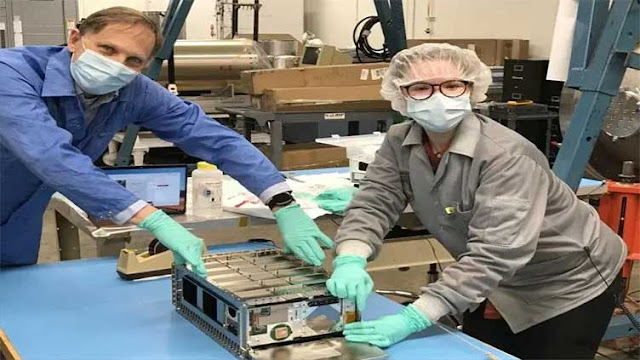The Colorado Ultraviolet Transit Experiment, or CUTE for short, is a tiny spacecraft that has been able to reveal new details about the atmospheres of "hot Jupiters," the largest and hottest type of planets in our universe.
CUTE was developed by NASA and the Laboratory for Atmospheric and Space Physics at the University of Colorado Boulder. It was launched into space in September of 2021.
CUTE is a $4 million cubesat, or mini-satellite that is about 14 inches long, or roughly the size of a "family-sized box of Cheerios."
Researcher Kevin France described how he used CUTE's ultraviolet telescope to observe several hot Jupiters, some of which are hundreds of light-years away from Earth, in a paper he presented at the 2023 American Geophysical Union meeting.
Though they have roughly the same mass and size as Jupiter, hot Jupiters orbit closer to their star than Mercury does to the Sun, earning them the moniker "hottest and angriest group of planets in the galaxy."
How the atmospheres of these planets change so close to their stellar companion is one mystery that CUTE may be able to help solve. The atmospheres of hot Jupiters expand as they orbit their stars, but CUTE reveals that some are losing atmosphere due to their closeness to the star, while others appear to be more resilient.
France released a statement stating, "The planets seem to be coming in all of the flavors."
France clarified that learning about the evolution of planets, even those that differ greatly from Earth, could advance our understanding of worlds that resemble Earth.
"There’s a lot of evidence that suggests that super Earths begin as planets the size of Neptune with large, puffy atmospheres, which then lose so much mass that all that is left is the rocky core and possibly a thin atmosphere," France stated.
